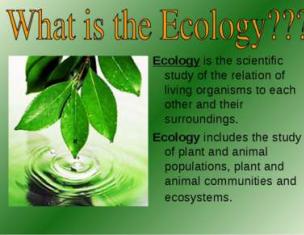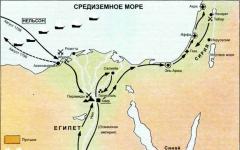Like any phenomenon, the market has its advantages and disadvantages. Market advantages include:
— efficient allocation of resources – the market directs resources to the production of goods necessary for society;
— flexibility, high adaptability (adaptability) to changing conditions. So, when in the early 1970s. energy prices rose sharply, the market responded to this by developing alternative sources energy, the introduction of resource-saving technologies, the introduction of a regime of austerity of energy resources;
— optimal use of the results of scientific and technological progress. In an effort to maximize profits, entrepreneurs take risks, develop and produce new products, introduce the latest technologies into production, which allows them to have temporary advantages over competitors;
— freedom of choice and action of consumers and producers. They are independent in making their decisions, concluding various transactions, hiring labor, etc.;
— the ability to satisfy diverse needs, improve the quality of goods and services.
But the market also has negative aspects:
· does not contribute to the conservation of non-renewable resources;
· does not have an economic mechanism for environmental protection; only legislative acts can force entrepreneurs to invest in the creation of various types of environmentally friendly industries;
· does not create incentives for the production of collective goods - such as fire department, road markings, street lighting, army, police, etc.;
· does not guarantee the right to work and income, does not ensure the redistribution of income. Economic actors have to make their own decisions in order to change their financial situation. The market reproduces existing inequality;
does not provide self-sufficiency basic research in science;
· subject to unstable development with inherent inflationary processes and unemployment.
Solving the problems listed above, which can be solved market system unable to do so, the state takes over.
The most important argument of critics of the market system is the fact that the market allows and even stimulates the extinction of its main regulatory mechanism - competition. They highlight two main arguments in justifying their position:
- competition plagues the individual producer with its harsh daily impact. Entrepreneurs, seeking to maximize profits and improve their economic situation, try to free themselves from action competitive relations. Unfair actions of entrepreneurs and monopolization of markets contribute to the weakening of competition. A. Smith formulated this thesis as follows: “Representatives of the same industry rarely meet with each other, but when such a meeting occurs, the conversation between them ends in a conspiracy against the public or some kind of maneuver to raise prices”;
- it is assumed that technical progress which the market system encourages contributes to the decline of competition. The latest technology, as a rule, requires: a) the use of large amounts of investment; b) large markets; c) rich and reliable sources of raw materials. This kind of technology predetermines the existence of large-scale manufacturing companies that provide entire regions, countries and international markets. In other words, achieving maximum production efficiency based on the use of latest technology often requires the existence of large number relatively large firms, rather than a large number of relatively small ones.
External effects. An externality occurs when the production or consumption of a good has a direct impact on producers or consumers who are not involved in the process of buying and selling that good, and when it side effects are not fully reflected in market prices. For example, an entrepreneur, trying to avoid additional expenses for wastewater treatment plants, during the production of its products pollutes environment. The polluted atmosphere and untreated wastewater have a harmful effect on all residents of the area, including those who are not involved in the purchase and sale transactions of the product produced by the entrepreneur. In other words, the costs of production in this case are transferred to people not involved in the production or trade process; so the process for them will be external.
Domestic markets of industrialized capitalist countries
The economic development of countries is largely determined by the nature and depth of the social division of labor, during which the development of internal markets occurs. The conditions of their functioning affect the efficiency of production, both its individual types and the economic system as a whole. The internal market, which refers to the system of exchange within the national economy without the export-import sector, is the primary element of the entire system of functioning of the world economy. It includes internal communications, which characterize the scale and forms of interaction between various types of production that are part of national economy. External relations serve the participation of the national economy in the world economy. Analysis of domestic markets shows driving forces economic processes in each individual country and, to a certain extent, in the subsystem as a whole.
Volume and level of development of domestic markets
- 1. The scale of domestic markets of most industrial developed countries, determined by the size of GDP, stand out among all countries in the world. They are among the top 50 markets. Only when counting gross product Based on the purchasing power of currencies, which takes into account the non-market sector of developing countries, the position of Western countries looks somewhat weaker. In this case, the number of ten largest economies the world includes only six Western national economies. Noting the value of GDP as one of the indicators of the volume of the domestic market, it should be noted that a whole series small countries are different high degree internationalize them economic activity. Thus, the export quota for Belgium is 70% of GDP, for Ireland - 67, the Netherlands - 52, Austria - 40, Switzerland, Denmark - 37% of GDP. Within these limits, such countries also have an import quota. Consequently, the size of the domestic markets of small countries relative to GDP is small, and they largely depend on certain sectors of the world market. In large developed countries, the foreign segment in production and sales of GDP is 20-30%, while in the USA and Japan it is 10-15%.
- 2. Another general indicator of the volume and degree of development of the domestic market is per capita income. In general, this figure for industrialized countries is five times higher than the world average. All countries of the considered subsystem of the world economy are among the 30 leading countries in the world in terms of this indicator. The first places in terms of GDP per capita are occupied by Switzerland, Luxembourg, Japan, Sweden, Norway, Denmark, and the lowest group includes Greece, Spain, Portugal, Ireland, and South Africa.
- 3. The size of the market depends on the number of consumers served. The larger the society for whose needs domestic production is designed, the wider the opportunities for its development, although a certain part of consumers act as producers. Therefore, the population size serves as a certain guideline for the consumer and productive potential of a society, although there is no direct connection between the size of the population and the volume of the domestic market. The role of the number of consumers is usually inversely proportional to the level of development of a country. Most industrialized countries are classified as medium and small countries. Only two countries (USA and Japan) have a population exceeding 100 million people, four have 50 million people, and ten countries have populations that do not exceed 10 million; Iceland and Luxembourg have less than 0.5 million consumers. Small population size, along with a high level of development of productive forces, contributes to the specialization of production and active participation in the international division of labor, encouraging small and medium-sized countries to economic integration. international economic market
- 4. Characteristic feature markets of the First World countries - satisfying the demand of almost the entire population with commodity production. This is due to the spread of wage labor, qualitative character hiring On average, the share of hired workers is about 85% of the self-employed population, including over 90% in Britain and the USA. Informal activities play a minor role in most Western countries. Southern European countries are a definite exception. Respectively important feature domestic markets there is a close relationship between the spheres of production and consumption.
- 5. The capacity of domestic markets depends on the relationship between divisions and sectors of the economy, on their demand for basic elements final product. In the countries under consideration, domestic markets are characterized by a high level of inter-industry and intra-industry supplies, including intermediate products and investment products. The main factor in inter-industry connections is vertical integration, which will lead to increased dependence of reproductive processes in each industry on other industries, both in terms of demand and supply.
- 6. One of the most important indicators of the development of domestic markets is the level of development of market monetary relations, which can be expressed as the ratio of credit obligations within the country to GDP. In the first half of the 90s, loans received in leading Western countries exceeded 100% of GDP, compared to 50-60% in the 50s.
- 7. Along with the general capacity of domestic markets, the composition and nature of consumption, which represents the use of use value, is important. It consists of production and consumer demand. Industrial consumption is part of the production process and includes the production of means of production (tools and objects of labor) and the consumption of labor power, that is, the expenditure of its physical and spiritual energy. Non-productive consumption occurs outside of production. In the process, consumer goods are used or finally consumed. Thus, in the process of productive consumption, products are created, and in the process of non-productive consumption they are consumed.
Manufacturing demand is determined by the state production sector, and aggregate consumer demand - monetary requirements mainly of individuals. In turn, both industrial demand and consumer demand depend on the private and public sectors. In a long historical retrospective, there has been a decline in the share of private consumption of GDP. In 1820, it was obviously about 85%, in the early 90s of the current century - 61% of GDP. In recent decades, private consumption has grown at a faster rate.
Consumption (demand) and production (supply) are stages of the same process. A number of researchers believe that people’s attitude towards means of consumption has become more important than their attitude towards means of production, forgetting that the latter ensures the availability of the former. Ultimately, the level of consumption is determined by the development of production and productive forces.
The subject of trade on the domestic market can be food, natural resources, securities and objects. In the field of employment, the domestic labor market is distinguished.
Based on these factors, there are several definitions for the domestic market:
- This is the entire trade turnover and its features within the federal economy.
- This is a market with its own economic system between producers, sellers and buyers, operating within one state.
- These are economic and administrative processes that regulate relations between entities within the trading space.
Domestic market segments
Progress in the sphere of production and commodity circulation contributes to the formation and expansion of domestic markets. Specialization and the nature of the activity determined the segmentation of the domestic markets of one country. Thus, retail markets were separated from wholesale markets, commodity markets from factor markets.Securities market and stock market
This is an organized environment in which transactions take place on the stock exchange, capital and assets are sold and purchased, and securities are issued and put into circulation.Speaking about the domestic market, again we mean a territorially limited space, for example, within the country.
Labor market
It operates on the basis of personnel movement vertically (career growth) or horizontally (changing a work company to another, but maintaining the same position). The labor market can also be attributed to the “Country Resources” segment. Labor relations and the demand for workers directly affect the state of the state's economy.Real estate market
This sector helps set market prices for residential and non-residential properties. With its help, successful space administration is formed.At real estate auctions, assignments of property rights occur.
Foreign exchange market
The state of this sector, namely currency stability or exchange rate fluctuations, immediately affects the volume of import and export substitution. If the domestic currency falls, the purchase of imports decreases significantly, and the consumption of domestic products increases.The foreign exchange market includes various exchanges, financial institutions and electronic cash desks.
Credit market
Regulation of all credit relationships between banks, microfinance organizations and their clients. Borrowers can be both individuals and legal entities. The subject of this internal market is money.Investment market
Its main task is to attract investment through the correct distribution of finances and capital.Market of goods and services
It regulates the relations between producers, sellers and consumers of tangible goods and intangible services. This includes: the restaurant business, the activities of notary offices, etc.Integration processes have positive and negative consequences for the countries participating in these processes.
When considering them, it is necessary to take into account that the part national production, which is sent for sale outside the country, i.e. for export. As the prosperity of countries grows, domestic consumption, covered by imported foreign goods, also increases. Gaining strength external factors economic development(the impact of export and import operations) will increasingly influence the development of domestic markets of national economies.
First of all, the competitive national industries and enterprises of the countries participating in the integration processes benefit.
New markets are opening up for the products of such industries, and the industry has the opportunity to increase production and achieve additional profits mainly by reducing costs and increasing production volumes.
At the same time, the opportunity opens up to end the monopoly position of national firms and enterprises due to the entry of foreign manufacturers - competitors - into the national market. This contributes to the growth of competitive trends; the national market is forced to react to the situation in other markets.
In almost every economy, to one degree or another, there are shortages of national factors of production, such as labor, capital, investment goods, etc. Integration helps solve these problems by moving these factors of production from other countries, which are no longer hampered by national borders.
At the same time, the problem of attracting international capital is simplified. The deeper a country is involved in the integration process, the more chances it has to attract global capital flows and accelerate its development with the help of resources attracted from outside.
All of the above makes national markets more dynamic, since in general the dynamically developing world market forces national markets to take conscious actions aimed at their entry into the world market on a full basis.
The positive aspects of international integration flows coexist with inevitable losses. One of the main losses may be due to the sharp pressure of the competitive environment and the need to quickly regroup resources. This process, as a rule, is accompanied by the bankruptcy of inefficient producers (and this is, in general, good) and often mass unemployment (which is bad, since social tensions are exacerbated). At the same time, the emergence of new vacancies is usually not able to compensate for the number of lost jobs.
Due to the fact that the state has to take on a number of obligations in order to comply with certain international standards (ecology, living environment, etc.), the level of taxation may increase.
If the integration process reaches a wide scale, then changes in business practices may occur in countries, many established everyday traditions disappear, which causes some discomfort among some segments of the population, especially among those who have lost a stable income as a result of these changes. Therefore, an almost ideal option is the integration union of countries with similar levels of economic and social development. It is no coincidence that, for example, the European Union sets conditions for countries wishing to join it to achieve a certain level of economic development.
The second serious loss may be the aggressive “offensive” of foreign capital, which seeks to occupy the most profitable business niches, leaving the markets of medium and small businesses to local producers.
Since, in the context of globalization, the national market becomes the place where international information and financial flows take place, i.e. turns into an integral part of the world market structure and international global networks pass through it, weakening the counterbalance to the onslaught on national markets from successful foreign businesses.
The removal of borders, for its part, leads to an outflow of resources, including human resources, to more successfully and intensively developing regions. The danger of this lies in the fact that the country sharply loses the opportunity to modernize the real sector, its “intellectual efficiency” falls, and therefore its ability to be an equal member of the integration association.
Import dependence is another threat to the national market. In this case, domestic producers are pushed out of the leading positions of the national market, which practically makes the country dependent on imported goods supplies, and the economic security of the country is lost.
A serious problem for the country can be created by its dependence on the movement of international speculative financial capital, since the globalization of financial markets has almost completed, and the possibility of rapid inflows and sudden outflows of “hot” money leads to turmoil in the capital market.
Negative factors in integration processes can be mitigated by a number of actions taken at the state level. These include:
orientation of economic growth towards innovative processes;
integration of the country's national market into the global network of TNCs as one of the components of the process of internationalization of production;
finding adequate sales markets, i.e. markets where domestic exports could find demand;
diversification of national production, i.e. simultaneous development of many unrelated technological types of production and other business activities, expansion of the range of goods and services produced;
a well-thought-out policy of attracting foreign investment as a tool for economic diversification;
protection against speculative financial capital through capital account restrictions, or restrictions on the flow of such capital into a country.
TO beginning of XXI century Russian economy found itself in an extremely unfavorable starting position.
As a result, unprecedentedly deep for peacetime and protracted crisis The economy has been set back several decades in terms of production volume, product competitiveness, level and quality of life, and management efficiency.
At the same time objective reasons and factors combined with major strategic mistakes, miscalculations and other subjective factors.
And yet Russian economy has not lost its viability, potential revival, development and transition to the post-industrial stage of development. Preserved high level education, qualifications of a significant part of the country’s labor potential, a developed socio-cultural sphere (primarily science, culture and education), which is becoming key in the formation of a post-industrial society.
The country has a variety of species natural resources - mineral, land, forest, water. For many of them, it continues to be a unique treasure trove of the world for the 21st century and can take advantage of this to extract the world natural rent as a development resource.
Russia favors it geographical location on the shortest transport routes between rapidly developing countries of the East and West, which allows you to receive transport and tourist rents.
Preserved significant volume of the domestic market and its reintegration began, which is the basis for the development and increase in income of domestic producers. Not completely destroyed in the powerful past production potential and developed infrastructure, although they quickly become outdated and require large investments for a radical update.
There are also counteracting factors, preventing the revival of the Russian economy and increasing its role in the world economy. These are primarily unfavorable climatic conditions in most of the country, spatial dispersion of cities and villages, which leads to increased transport costs and people's livelihoods, the generally high level of production costs.
They interfere obsolescence and technical backwardness of the prevailing part of fixed assets, which were almost not updated in the 90s. and are largely unsuitable for the production of competitive goods and services.
IN recent years Russia got involved in world economy as supplier of fuel and raw materials(whose reserves, by the way, are running out) and the buyer of finished products.
According to World Bank, external debt increased from $59.8 billion in 1990 to $183.6 billion in 1998 and reached 62% of GNP. Debt payments with interest burdened the state budget. However, as of September 1, 2013, Russia’s external public debt decreased to $49.54 billion.
Very low investment attractiveness of the Russian economy for both domestic and foreign investors. Direct foreign investment in 2000 amounted to only $4.4 billion, but in 2012 year they increased to $51.4 billion.







